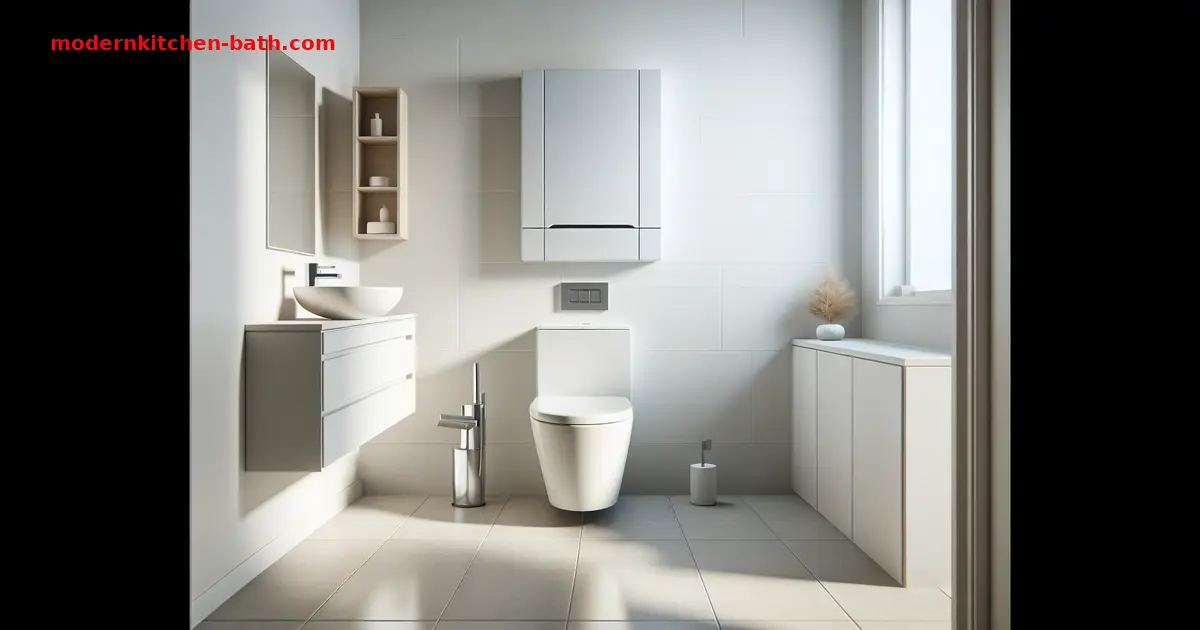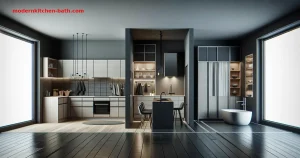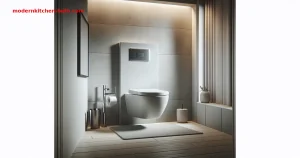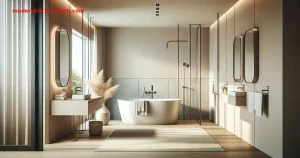Introduction: Maximizing Space with the Right Toilet
Small bathrooms present unique design challenges. Every inch counts, and choosing the right fixtures can significantly impact the space’s functionality and aesthetic appeal. The toilet, a necessity, often takes up considerable room. Fortunately, numerous toilet designs cater specifically to compact bathrooms. In this guide, we’ll explore how to choose a toilet for a small space, covering essential factors, space-saving options, and installation considerations.
Understanding the Challenges of Small Bathrooms
Before diving into specific toilet types, it’s crucial to acknowledge the common challenges associated with small bathrooms:
- Limited Space: This is the primary constraint. Every fixture must be carefully selected to optimize available room.
- Maneuverability: Tight spaces can make it difficult to move around comfortably.
- Storage: Small bathrooms often lack adequate storage. Choosing a smaller toilet can free up space for essential storage solutions.
- Aesthetics: Despite the size limitations, maintaining a visually appealing and functional space is important.
Key Factors to Consider When Choosing a Toilet
Several factors influence the selection of a suitable toilet for a small bathroom:
1. Toilet Dimensions
The physical size of the toilet is the most critical consideration. Measure the available space carefully, accounting for clearance around the toilet. Consider both the width and depth of the toilet. Round-bowl toilets are typically more compact than elongated-bowl toilets, making them ideal for tight spaces.
2. Toilet Type
Various toilet types offer different space-saving benefits:
- Round-Bowl Toilets: These are the most space-efficient option, typically shorter in depth than elongated models.
- Elongated-Bowl Toilets: While offering more comfort, they require more space. However, some compact elongated models are available.
- Wall-Hung Toilets: These toilets are mounted to the wall, with the tank concealed within the wall. They save considerable space and offer a modern aesthetic. You can read more about toilet types on Wikipedia.
- Corner Toilets: Designed to fit snugly into a corner, these toilets maximize space utilization in awkward bathroom layouts.
3. Flushing Technology
Efficient flushing systems are essential for water conservation and effective waste removal:
- Dual-Flush Toilets: These toilets offer two flush options: a full flush for solid waste and a half flush for liquid waste. Dual-flush systems save water and reduce utility bills.
- Pressure-Assisted Toilets: These toilets use compressed air to create a powerful flush. They are particularly effective in removing waste and preventing clogs.
- Gravity-Feed Toilets: These toilets rely on gravity to flush waste. They are generally quieter and more affordable than pressure-assisted models.
4. Rough-In Measurement
The rough-in measurement is the distance from the wall to the center of the toilet’s drainpipe. Standard rough-in sizes are 12 inches, 10 inches, and 14 inches. Ensure that the toilet you choose matches your bathroom’s rough-in measurement. A mismatch can result in costly plumbing modifications.
5. Comfort Height
Comfort height toilets, also known as chair-height toilets, are taller than standard toilets. They are easier to use, particularly for individuals with mobility issues. Consider a comfort height toilet if accessibility is a concern.
6. Water Efficiency
Look for WaterSense-certified toilets. These toilets meet EPA standards for water efficiency, using no more than 1.28 gallons per flush (GPF). Water-efficient toilets save water and reduce your environmental footprint.
Space-Saving Toilet Options
Several toilet designs are specifically engineered to maximize space in small bathrooms:
Wall-Hung Toilets
Wall-hung toilets are an excellent choice for small bathrooms. They create a floating effect, making the room feel larger. The tank is concealed within the wall, saving valuable floor space. Wall-hung toilets also simplify cleaning, as there is no base to clean around. They can be slightly more expensive to install, due to the need to install a support frame within the wall, however the benefit of saving space makes them appealing.
Corner Toilets
Corner toilets are designed to fit snugly into a corner, utilizing otherwise unused space. They are an ideal solution for bathrooms with awkward layouts or limited wall space. Corner toilets come in various styles and flushing technologies.
Compact Elongated Toilets
Some manufacturers offer elongated toilets with a reduced depth. These compact elongated models provide the comfort of an elongated bowl without sacrificing too much space. They are a good compromise for those who prefer the shape of an elongated bowl but need to save space.
Two-Piece Toilets
Traditional two-piece toilets, where the tank and bowl are separate, can sometimes offer a slightly smaller footprint compared to one-piece models. While the difference may be marginal, every inch counts in a small bathroom. Look for models with a compact design.
Installation Considerations
Proper installation is crucial for the toilet’s performance and longevity:
- Professional Installation: Unless you have plumbing experience, it’s best to hire a professional plumber to install the toilet. Professional installation ensures that the toilet is properly sealed and connected to the plumbing system.
- Rough-In Compatibility: Double-check the rough-in measurement before installation. Incorrect rough-in measurements can lead to leaks and other plumbing issues.
- Floor Preparation: Ensure that the floor is level and sturdy before installing the toilet. Uneven floors can cause the toilet to wobble or leak.
- Sealing: Use a wax ring to create a watertight seal between the toilet and the drainpipe. Replace the wax ring whenever you remove and reinstall the toilet.
Tips for Maximizing Space in a Small Bathroom
Choosing the right toilet is just one aspect of maximizing space in a small bathroom. Here are some additional tips:
- Use Light Colors: Light colors make the room feel larger and more open.
- Install a Wall-Mounted Sink: Wall-mounted sinks save floor space and create a modern look.
- Add Shelving: Install shelves above the toilet or sink to provide additional storage.
- Use Mirrors: Mirrors create the illusion of more space.
- Minimize Clutter: Keep the bathroom clutter-free by storing items in cabinets or drawers.
Conclusion
Choosing a toilet for a small space requires careful consideration of dimensions, toilet type, flushing technology, and installation requirements. By selecting a space-saving toilet and implementing smart design strategies, you can maximize the functionality and aesthetic appeal of your compact bathroom. Remember to prioritize water efficiency and comfort while optimizing space. Consult with a plumbing professional to ensure proper installation and compatibility with your existing plumbing system. Considering regulations such as the EPA WaterSense program will help you in selecting the most water-efficient options.
FAQ
What is the best type of toilet for a small bathroom?
Wall-hung and round-bowl toilets are generally the best options for small bathrooms due to their compact size and space-saving design.
How do I measure the rough-in for a toilet?
Measure the distance from the wall to the center of the toilet’s drainpipe. Common rough-in sizes are 12 inches, 10 inches, and 14 inches.
What is a WaterSense toilet?
A WaterSense toilet meets EPA standards for water efficiency, using no more than 1.28 gallons per flush (GPF).
Can I install a wall-hung toilet myself?
It’s best to hire a professional plumber to install a wall-hung toilet, as it requires specialized plumbing and structural support.
How can I make my small bathroom feel larger?
Use light colors, install a wall-mounted sink, add shelving, use mirrors, and minimize clutter to make your small bathroom feel larger.







Leave a Comment